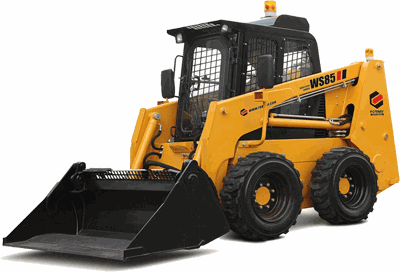Skid steer loaders: their features, advantages, and areas of use in construction and industry.
Skid Steer Loaders
Aerial platforms, lifts, mini-excavators, and skid steer loaders — all of this equipment is well known to every builder. A professional construction worker or road repair specialist knows exactly what these machines are for and how they operate. But if you're not an expert in loaders and aerial platforms, this article will help you understand how one type of this equipment works.Let’s talk about the design and purpose of skid steer loaders. This type of machinery is commonly used in construction and maintenance work for both urban structures and roads. The main components of skid steer loaders include:
• frame,
• engine,
• hydrostatic transmission,
• final drive,
• undercarriage,
• working equipment system with hydraulic drive.
Skid steer loaders have a rigid wheel suspension and a frame that serves both as a structural chassis and as a reservoir for the hydraulic fluid. Like many mini-excavators and motor graders, skid steer loaders are equipped with a dedicated operator’s cabin.
Using skid steer loaders on-site often eliminates the need for additional equipment such as bulldozers, excavators, and graders. Their main advantage lies in the ability to rotate the bucket around the center of mass without moving the machine forward or backward. This equipment is highly mobile and easy to operate. It’s ideal for tight spaces such as city streets and small yards. Skid steer loaders can not only transport materials over short distances but also dig trenches.
However, it is important to note that operating costs for skid steer loaders are relatively high, though they are justified by the machine’s versatility, lifting capacity, and mobility.

Skid steer loaders have become more popular on construction sites today than aerial platforms, lifts, and graders. Their convenience and work efficiency have already been appreciated by many construction companies in Russia.